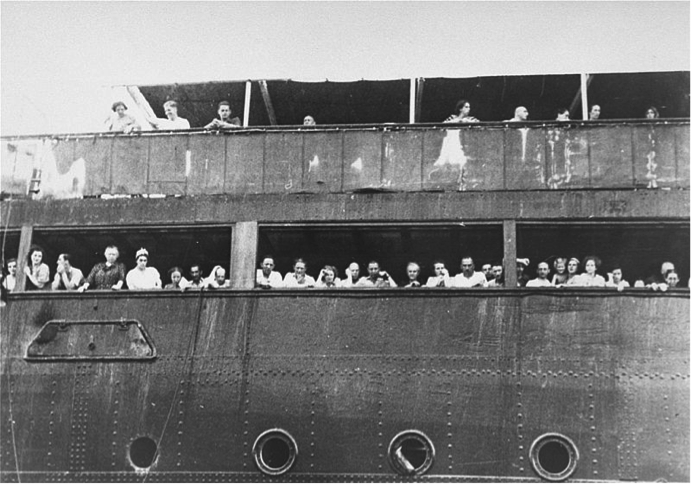June 17, 1939
On May 13, 1939, the SS St. Louis left Hamburg, Germany with 938 passengers on board, almost all of whom were Jewish refugees fleeing from Nazi Germany. The ship was bound for Havana, Cuba. Most of the passengers had landing permits for Havana that they had purchased in Germany. They planned to remain in Cuba and wait for an opportunity to be admitted into the United States.
When the St. Louis arrived in Havana on May 27th, Cuban officials denied entry to all but twenty-eight passengers. Unbeknownst to the passengers on the St. Louis, in early May Cuban officials had changed the requirements for entry in response to anti-Semitic pressure. Thus, the transit visas held by the Jewish refugees were no longer valid. Despite efforts by the Joint Distribution Committee (JDC) to negotiate with the Cuban government, the ship was forced to leave Havana on June 2 with 910 passengers still on board. One refugee on the ship committed suicide.
The ship did not immediately return to Hamburg. It anchored twelve miles from the coast of Havana as the JDC and other American Jewish organizations tried to negotiate admission of the refugees to the United States. A telegram from the ship’s passengers to President Roosevelt was not answered. Immigration quotas established in 1924 permitted only 27,370 immigrants in total from Austria-Germany in 1939, and the State Department refused to alter this policy. The story of the St. Louis attracted a lot of attention in the American press. A Washington Post editorial on June 3, 1939 questioned, “Clearly there should be some place where these victims of twentieth century persecution can find at least a temporary haven?”
After lingering off the coast of Florida for several days, the ship began its return to Europe on June 6. While the ship was en route, the JDC successfully negotiated with the governments of Great Britain, the Netherlands, Belgium and France for the admission of the refugees. According to the United States Holocaust Memorial Museum, 254 of the passengers were later murdered in the Holocaust.
The US Holocaust Memorial Museum has an interactive exhibit about the Voyage of the St. Louis that can be found here.










